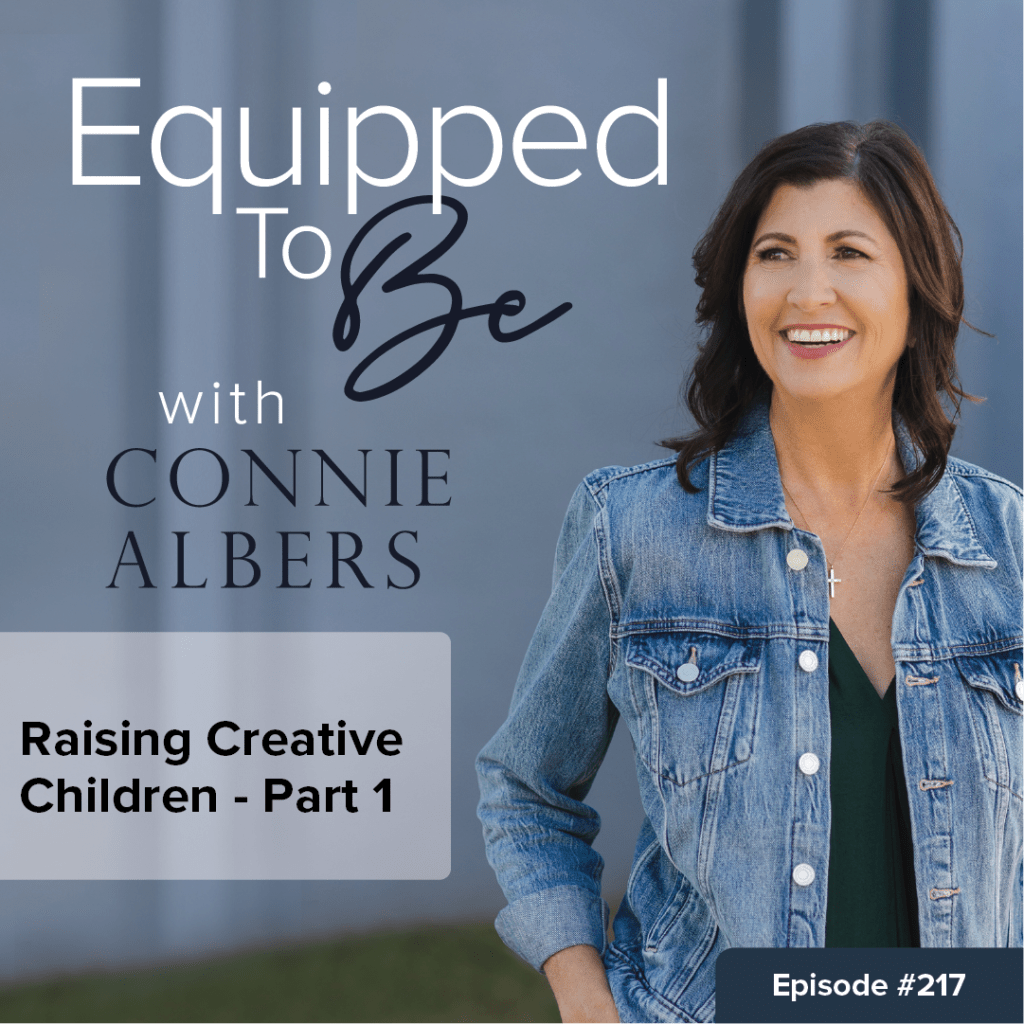Have you ever wondered how to encourage and develop your child’s creativity without overwhelming them or stifling their natural curiosity? I have. Raising creative children taught me so much about how creative/artistic kids see and engage in the world around them that I started speaking on this topic years ago. This topic is so valuable to parents that I decided to dedicate two episodes: Raising Creative Children Part 1 and Raising Creative Children Part 2.
During this episode, I will share practical tips to help you cultivate a nurturing environment that allows your child’s imagination to flourish. Whether your child loves to paint, dance, write, or invent, they need you to guide and celebrate their creative journey. So, grab a smoothie, relax, and let’s embark on this exciting adventure together! 🙂

Before we talk about nurturing a creative child, you need to know how they think, feel, and experience the world. If you take time to learn some simple characteristics, you’ll enjoy the rewards of watching them grow and develop their craft.
Creative Children View Life Differently
A creative child views the world through a lens of endless possibilities, where every ordinary object holds the potential for extraordinary transformation. They see patterns, colors, and stories in the most mundane settings, turning every day into a canvas for their imagination. Their perspective is rich with curiosity and wonder, constantly seeking to explore, understand, and reinvent the world around them.
Common Characteristics of a Creative Child
Creative children often display a unique set of traits and behaviors that distinguish them from their peers. I could list many characteristics of a creative child, but these will help you identify the common characteristics :
- Vivid Imagination: Creative children frequently have rich imaginations and enjoy inventing stories, games, and scenarios.
- Curiosity: They often ask a lot of questions and show a keen interest in exploring and understanding the world around them.
- Energetic: Creative children are usually energetic and enthusiastic, particularly when engaged in activities they are passionate about.
- Resilience: They are often persistent and resilient, willing to tackle challenges and learn from failures.
- Self-Directed: Creative children often prefer working independently and may resist conventional instructions or routines.
- Depth of Emotion: They often experience and express deep and complex emotions through their creative outlets.
When we pay attention to what our creative children need, we can better nurture their creative potential effectively.
Supplies for Creative Children
By providing the right resources, environment, and encouragement, you can help your artistic children hone their skills and develop their unique creative voices. It’s about progress over perfection, nurturing imagination, and learning to fail and keep going.
- Basic Supplies: Keep a stock of essential items like paper, pencils, paints, brushes, and clay.
- Specialty Items: Occasionally introduce more specialized materials such as canvases, charcoals, or digital art tools.
- Books and Tutorials: Invest in art books, online tutorials, and classes that cater to your child’s interests.
Your children look to you not just for basic needs but also for emotional and spiritual support. They need you to protect them from harm, teach them right from wrong, love them unconditionally, serve them with a joyful heart, and play with them. All these actions create lasting memories.
Practical Examples to Encourage Creatives
Encouraging your creative child doesn’t have to be complicated; small, everyday actions can make a significant impact. Here are some practical examples to help nurture and inspire your child’s creativity at home.
- Provide creative space. Creative children need time and space to think and dream.
- Encourage exploration and experimentation: Allow your child the freedom to experiment with different art forms, materials, and techniques, encouraging them to take risks and embrace mistakes as valuable learning experiences.
- Celebrate effort, not just results. Creative children tend to be more sensitive to failure, and they thrive when we praise their progress.
- Create diverse experiences: Encourage your child to explore various activities and environments, such as visiting museums, attending art workshops, or spending time in nature to broaden their creative horizons.
- Encourage collaboration and sharing
When you add practical examples for your children, you will foster a supportive environment that nurtures and develops a child’s creative abilities.
Supporting children’s artistic journey not only fosters their talents but also contributes to their overall personal development. By encouraging exploration, offering support, and celebrating their efforts, you are not only helping your child develop their creative talents but also instilling confidence and resilience that will benefit them throughout their lives.
Related Episodes
How to Connect with Connie
- Follow Connie Albers on Instagram | Facebook
- Learn more about Connie’s book Parenting Beyond the Rules.
- Learn more about the Equipped To Be podcast
Subscribe to Equipped To Be
If you find this podcast helpful, please subscribe and leave a review. It’s a great way to support the show and only takes a few seconds.
Have a Question or Want to Book Connie to Speak?
Would you like to have Connie speak at your event? Contact Connie here.



